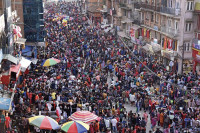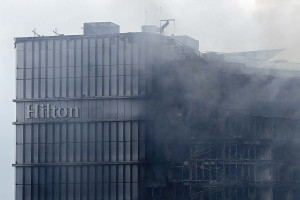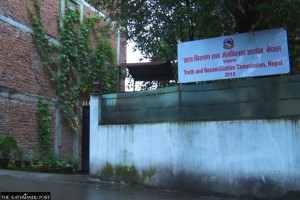Money
Budhi Gandaki listed as component of BRI
China has listed the Budhi Gandaki Hydropower Project in central Nepal as one of the components of its Belt and Road Initiative (BRI) which envisages greater trade and connectivity and supports varied infrastructure projects.
Bibek Subedi & Binod Ghimire
China has listed the Budhi Gandaki Hydropower Project in central Nepal as one of the components of its Belt and Road Initiative (BRI) which envisages greater trade and connectivity and supports varied infrastructure projects.
Inclusion of the 1,200 MW scheme in the BRI means it will also be awarded priority status by the Chinese government, ensuring speedy construction which could resolve Nepal’s perennial power crisis.
Nepal had asked China to include the Budhi Gandaki project in its ambitious infrastructure drive after signing a memorandum of understanding (MoU) with China Gezhouba Group of Corporation (CGGC) for the construction of the scheme.
The Energy Ministry signed the MoU with the Chinese company in June to build the project under the engineering, procurement, construction and finance (EPCF) model. The storage-type hydropower project located in Gorkha and Dhading districts will be the largest one in the country.
The agreement was signed by the then energy minister Janardan Sharma and CGGC President Lv Zexiang. It was signed at the prime minister’s residence in the presence of the then prime minister Pushpa Kamal Dahal and Chinese Ambassador to Nepal Yu Hong.
Under this model, the Chinese company will help arrange funding totalling $2.5 billon to develop the project and undertake the overall responsibility for executing it. Financing will be mobilised in the form of soft or commercial loans from Chinese financial institutions under terms and conditions acceptable to the Nepal government.
Speaking at an interaction with Nepali journalists in Beijing, Ma Yingying,
executive vice-president of CGGC, said the project’s being listed in the BRI means the Chinese government has prioritized it, ensuring faster construction.
The CGGC official added that the volume of the soft loan would increase following its inclusion in the BRI. Since Gezhouba has experience in handling financing for projects costing billions of dollars in Nigeria, Angola, Pakistan and Argentina, among other countries, ensuring adequate funds for the Budhi Gandaki project is not a big deal, she said.
“There is no issue with managing $2.5 billion for the project,” she said. Gezhouba assumes sole responsibility for all the construction works, and the project will be completed within the deadline, she added.
The Chinese developer, according to the MoU, will also conduct additional studies and investigations if required. The MoU has given the Chinese developer one year to conduct an assessment of the hydropower project and arrange necessary funds for its development.
Budhi Gandaki has been highlighted as a key project to resolve the perennial power crisis in the country, and the government has categorized it as a national pride project.
Currently, land acquisition is being done in Dhading and Gorkha districts where the project will be built.
The two district administration offices have been distributing compensation to local landowners.




 22.12°C Kathmandu
22.12°C Kathmandu














